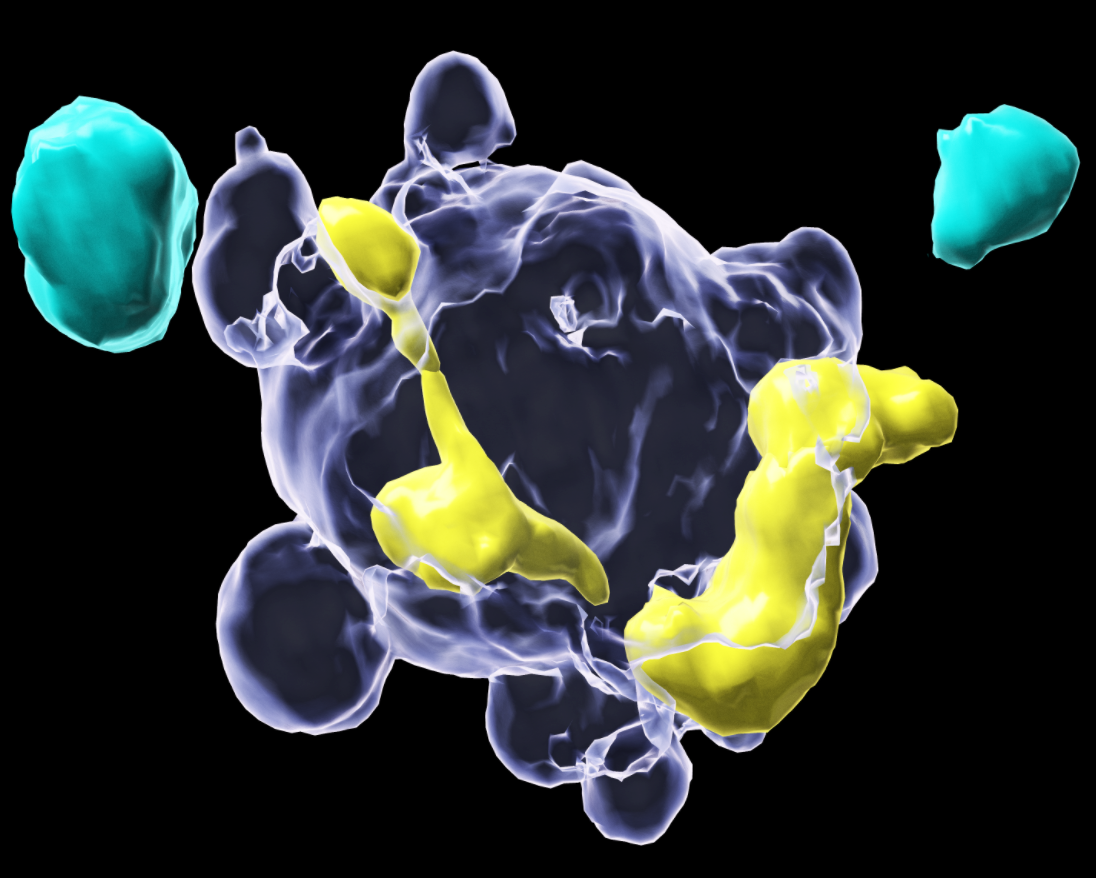A new 3D imaging and analysis technique, developed in Oncode Investigator Anne Rios’ lab (Princess Máxima Center), brings the working mode of T-cell immunotherapies into live view. T-cell immunotherapy is already leading to promising results in some children with leukemia. The Rios group teamed up with Zsolt Sebestyén and Jürgen Kuball, T-cell therapy experts, and the group of Oncode Investigator Hans Clevers, organoid specialists, to visualize T-cell therapy responses in organoid co-cultures. Researchers plan to use the new imaging technique to improve T-cell therapies for solid tumors. The results of this collaborative research endeavour are now published in the leading journal Nature Biotechnology.
T-cell therapies, such as CAR-T cells, are a promising type of immunotherapy that are already showing good results in treating children with leukemia. These kinds of therapies use the patient's own immune system by creating lab-adapted white blood cells that attack the tumor in a targeted manner. Effective T-cell therapies are also being sought for solid tumors, such as neuroblastoma, sarcoma and kidney tumors. However, to improve their clinical efficacy, we need to better understand the solid tumor-targeting behaviour of T-cells.
A wealth of fundamental knowledge
Lead authors Florijn Dekkers and Maria Alieva from the Rios group developed an imaging and analysis technology; BEHAV3D, that allows to analyse the interaction between T-cell therapies and solid mini-tumors in the lab both live and three-dimensionally. Florijn Dekkers: ‘Unique about this approach is that we are looking at cell therapy efficacy by studying the behaviour of the T cells. In total, we looked at the behaviour of over 150,000 T cells. This revealed a huge variety in behaviour. We observed very potent behaviours, such as killing of multiple tumor cells in sequence, but also ineffective behaviours, with cells just sitting around and doing nothing. This suggested to us that there is room to improve clinical activity by promoting the most potent tumor-targeting behaviours.'
Maria Alieva: 'To be able to stir T cell therapies towards their most effective behaviours, we need to know the underlying mechanisms that dictate this behaviour. That’s why I implemented an approach that, for the first time, links cell behaviour to molecular profiling. With it, we were able to identify the specific gene signature of highly potent T cells that can kill many tumor cells in a row. Thanks to BEHAV3D and the use of patient-derived tumor organoids, we can now gather a wealth of fundamental knowledge about T-cell behaviour in relation to their ability to kill solid tumors.'

Improving targeting by T cell therapies
Anne Rios: ’We initially looked at the behaviour of so-called TEG cells, a highly promising T cell therapy developed in the lab of our collaborators; Zsolt Sebestyén and Jürgen Kuball. However, we were able to apply BEHAV3D to different kinds of T cell therapies, as well as cancer subtypes. Therefore, we believe that this platform can be highly useful to further fine-tune the tumour targeting efficacy of many T cell therapies that are currently being developed to treat cancer. As an example, by treating mini-tumors that are not susceptible to TEG cells with a type 1 interferon, a type of protein that signals to immune cells and that we identified with BEHAV3D to signal during the targeting response, we made them susceptible to TEG cells.’